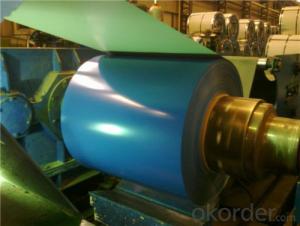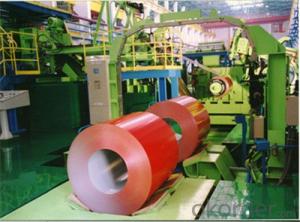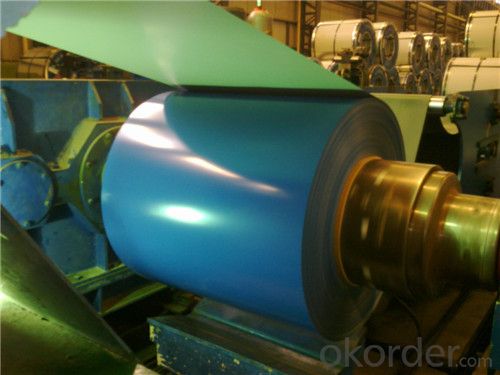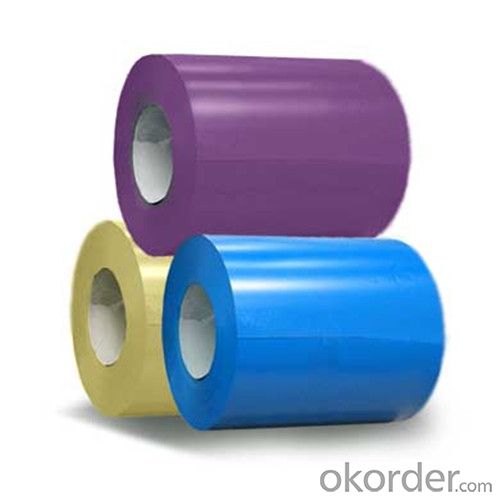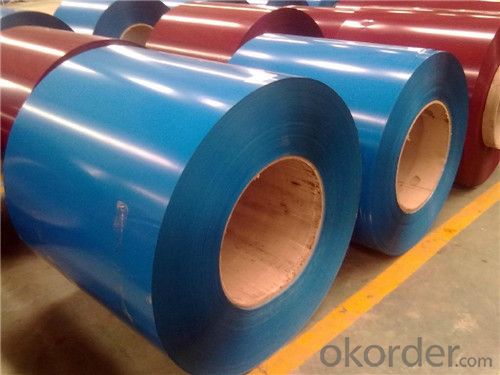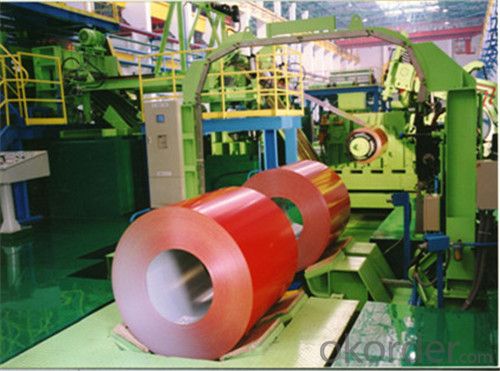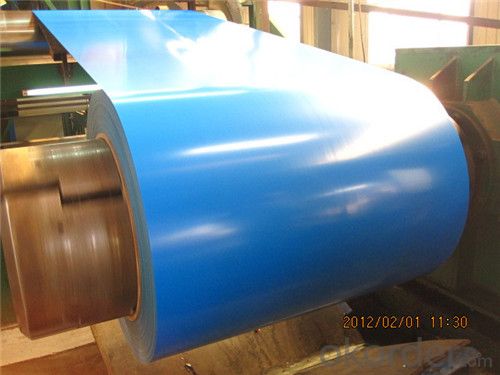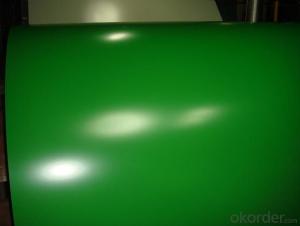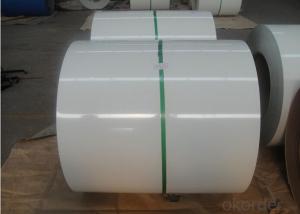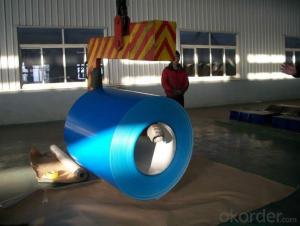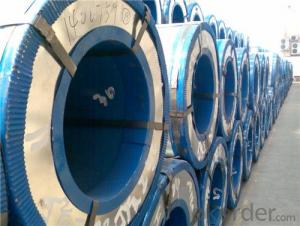Z47 BMP Prepainted Rolled Steel Coil for Constructions
- Loading Port:
- Shanghai
- Payment Terms:
- TT OR LC
- Min Order Qty:
- 100 m.t.
- Supply Capability:
- 30000 m.t./month
OKorder Service Pledge
OKorder Financial Service
You Might Also Like
Structure of Z47 BMP Prepainted Rolled Steel Coil for Construction

Description of Z47 BMP Prepainted Rolled Steel Coil for Construction
Cold Rolled Steel is steel that has been worked below its recrystallization temperature by passing it between a pair of rollers.
Recrystallization temperature is the temperature at which grains in the lattice structure of the metal have been rearranged, leaving it free of strain and deformations.
Cold Rolled Steel is pre-treated before being cold rolled with a process known as pickling, which uses strong acids to remove scale and other impurities.
The Cold Rolled Steel is then passed through rollers to reduce its thickness. Most cold rolling takes place in multiple passes and as the size of the Cold Rolled Steel is further reduced, its strength and hardness both increase, but its ductility decreases.
After cold rolling, heating the metal up in a process known as annealing can restore some of its ductility.
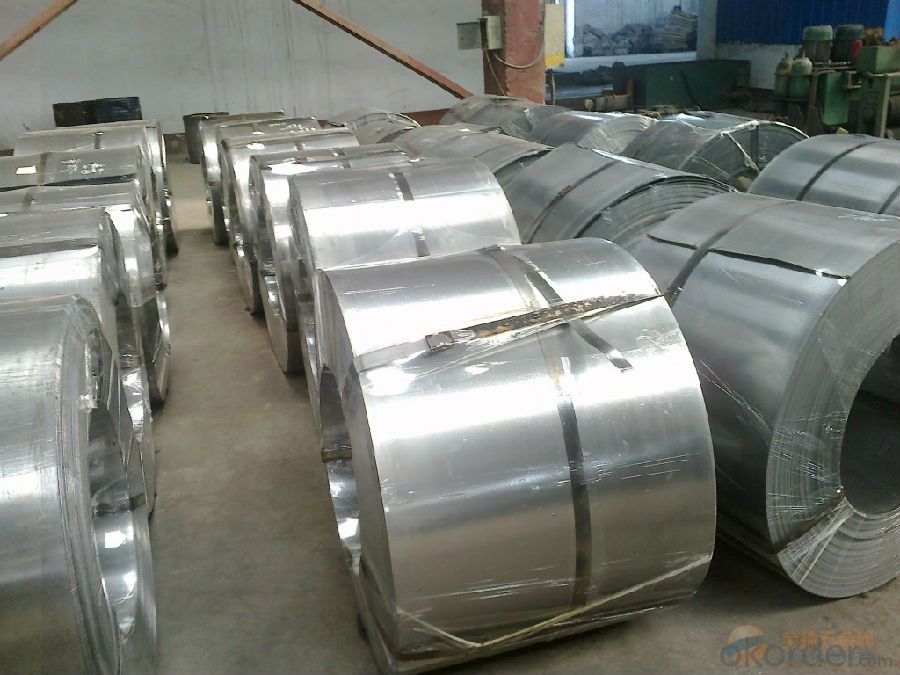
Main Feature of Z47 BMP Prepainted Rolled Steel Coil for Construction
Galvanized steel sheet(include HDG and EG)
With the features of good corrosion resistance, the products are mainly used in automobile, home appliance, electronics, building and machinery manufacture industries, etc.
Precoated steel sheet
With the features of enviromental protection and good processablility, long lasting surface durability, rich in colors, the products are maily used in building, home appliance and furniture industries, etc.
Electrical steel sheet
Mainly used to manufacture generating equipment, locomotive, industrial motor and home appliance.
Applications of Z47 BMP PPGI Prepainted Rolled Steel Coil for Construction
it is ideal for a wide range of applications, such as pre-engineered buildings, architectural panels, roofing, siding, cladding, and many other building components.and also used back plate of appliance; wide range of construction, furniture industry, transportation industry, etc.
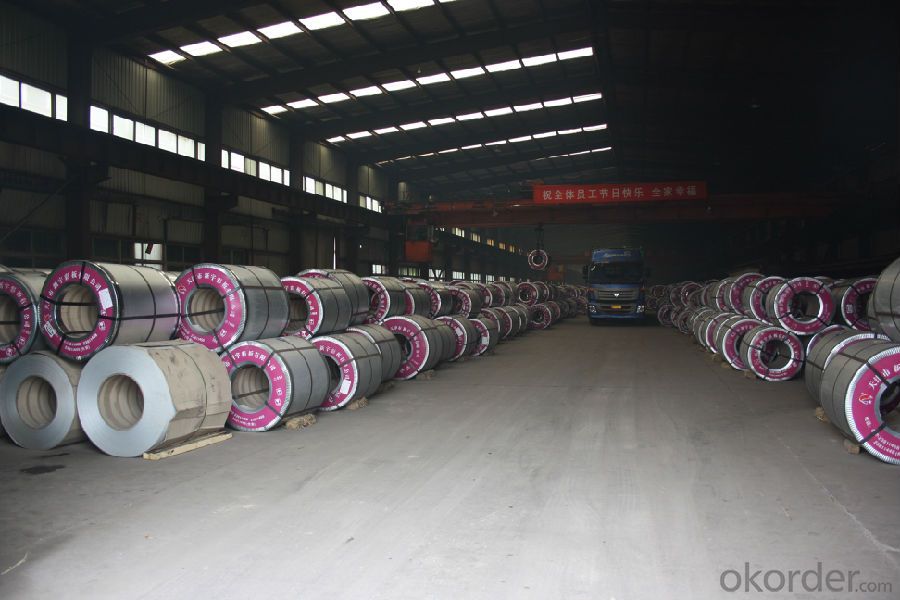
Specifications of Z47 BMP Prepainted Rolled Steel Coil for Construction
Product | Z47 BMP Prepainted Rolled Steel Coil for Construction |
Material Grade | SGCC / SGCH / DX51D+AZ, etc |
Thickness | 0.6-3.0mm |
Width | 500-1500mm |
Tolerance | Thickness: +/-0.02mm , Width:+/-2mm |
Zinc-coating | Z30-150g/m2 |
Technique | Raw material: Hot rolled steel coil --> Cold rolled_>hot dipped galvalume |
Surface | Dried, Chromated, Unoiled |
Spangle | Regular spangle , small spangle, zero spangle |
ID | 508MM 610MM |
Coil weight | 1-25MT |
Export package | Cardboard inner sleeves, Waterproof paper, galvanized steel covered and steel strip packed |
FAQ of Z47 BMP Prepainted Rolled Steel Coil for Construction
We have organized several common questions for our clients,may help you sincerely:
1. How Can I Visit There?
Our company is located in Tianjin City, China, near Beijing. You can fly to Tianjin Airport Directly. All our clients, from home or aboard, are warmly welcome to visit us!
2. What's your normal delivery time?
Our delivery time about 15-20days for standard sizes, if you have other requirements like hardness, quanity and width ,it is about 20-40days. But don't worry ,we also try our best for the delivery time ,because time longer and our cost is higher.
3. Why choose CNBM?
Our delivery time about 15-20days for standard sizes, if you have other requirements like hardness, quanity and width ,it is about 20-40days. But don't worry we also try our best for the delivery time ,because time longer and our cost is higher.
- Q: I want to design and fab a steel helmet like that in the latest Batman cartoon movie. Only problem I can foresee is staining the metal red.
- Yes you can, steel is a very storng metal. Source - www.qualitas-steel-doors .uk/
- Q: How are steel coils processed at the steel service centers?
- Steel coils are processed at steel service centers through a series of steps to transform them into finished products that meet the specific requirements of customers. The process typically begins with the arrival of the steel coils at the service center. These coils are typically large and heavy, and may have been produced by a steel mill or imported from overseas. Once the steel coils are received, they are typically inspected for quality and any defects. This ensures that only high-quality coils are used in the production process. The coils are then stored in a warehouse until they are ready to be processed. Next, the steel coils are uncoiled. This involves unwinding the coil to create a flat sheet of steel. This can be done manually or using automated machines depending on the size and thickness of the coils. The uncoiled steel is then leveled to remove any residual stress and ensure a flat and consistent surface. After leveling, the steel sheets may undergo various processes depending on the desired end product. These processes can include cutting, shearing, slitting, and forming. Cutting and shearing involve cutting the steel sheets into specific sizes or shapes. Slitting involves cutting the steel into narrow strips, while forming involves bending or shaping the steel into the desired form. Once the desired processing operations are complete, the steel sheets are often treated with surface finishes to enhance their appearance or protect them from corrosion. These finishes can include painting, coating, or galvanizing. Finally, the processed steel sheets are inspected for quality again to ensure they meet the required specifications. They are then packaged and ready for shipment to customers, who may use them in various industries such as construction, automotive, or manufacturing. Overall, the processing of steel coils at steel service centers involves a combination of inspection, uncoiling, leveling, cutting/shearing/slitting/forming, surface finishing, quality control, and packaging. This process allows for the transformation of steel coils into finished products that are tailored to meet the specific needs and requirements of customers.
- Q: What are steel coils used for?
- Steel coils are used for a variety of applications, including manufacturing automobiles, construction materials, appliances, and machinery. They are also used in the production of pipes, electrical appliances, and packaging materials.
- Q: What are the different types of steel coil leveling methods?
- There are primarily two types of steel coil leveling methods: roller leveling and stretcher leveling. Roller leveling involves passing the coil through a series of rollers to remove any unevenness, resulting in a flat and level surface. Stretcher leveling, on the other hand, stretches the steel coil to remove any internal stresses and achieve a flat and level surface. Both methods are commonly used in the steel industry to produce high-quality and dimensionally accurate steel coils.
- Q: Correct me if I am wrong, but steel is an alloy between iron and carbon. Does the carbon in the steel stops the iron from rusting or corroding? Also what is the difference between mild steel and stainless steel?
- Mild steel is an alloy. It is the most common form of steel. Mild steel (a so-called carbon steel) is a general term for a range of low carbon (a maximum of about 0.3%) steels that have good strength and can be bent, worked or can be welded into an endless variety of shapes for uses from vehicles (like cars and ships) to building materials. The carbon does not stop the material rusting or corroding. In addition to iron, carbon, and chromium, modern stainless steel may also contain other elements, such as nickel, niobium, molybdenum, and titanium. Nickel, molybdenum, niobium, and chromium enhance the corrosion resistance of stainless steel. It is the addition of a minimum of 12% chromium to the steel that makes it resist rust, or stain 'less' than other types of steel. The chromium in the steel combines with oxygen in the atmosphere to form a thin, invisible layer of chrome-containing oxide, called the passive film. The sizes of chromium atoms and their oxides are similar, so they pack neatly together on the surface of the metal, forming a stable layer only a few atoms thick. If the metal is cut or scratched and the passive film is disrupted, more oxide will quickly form and recover the exposed surface, protecting it from oxidative corrosion.
- Q: If you were selecting a tool steel for an extreme impact load application, which one would you pick? why?thanks
- It all depends what the application actually is. For hammers I would select a hammer grade B1 steel. For impact loading where an edge is needed I would be going for O1 or similar (oil quenching steels tend to be a little tougher than air hardening). For mining tools a very high manganese steel (Hadfields steel) - this is not a true tool steel. The best place to start is by looking at the ranking of the properties which you want - hardness v toughness v strength - and then use this to put the steels in rank order. Price and availablity then sort the problem out for you (in the real world).
- Q: How are defects in steel coils detected and resolved?
- Defects in steel coils are detected through various methods such as visual inspection, ultrasonic testing, magnetic particle inspection, and eddy current testing. Once a defect is identified, it is resolved through processes like grinding, welding, or cutting out the affected area. In some cases, the entire coil may need to be rejected or sent for further processing to eliminate the defect.
- Q: case hardening steel is adviced or thru hardening steel is most suitable?
- I don't know your application, but here is some advice. Case hard provides a hard shell around soft steel, depending on the bake, the case is usually .002-.008 thick. (thousands of an inch) Heat treated steel or tool steel is hard all the way thru. Case hardening, provides toughness with flexibility, however, once it's compromised, the part is scrap. Hardend tool steel is extreemly hard throughout and the harder it is, the more brittle it becomes. The application of the part will help you to determine the material needed. For instance; Plastic injection molds are very hard so the hot plastic wont erode them over years of use. Punch Press dies aren't as hard but are tougher to withstand the shock. Machine bolts are case hardened so they can last, but soft enough to allow some stretching during tightening. Either way, the time in mfg will be about the same. Most tool steels today cut like cheese, but take time to be heat treated. Tool steel will cost a bit more than low carbon steel. Low carbon steel is as machinable, and cheaper, but, again, the baking period is as long or longer than tool steel. There are a lot of materials on the market today that maintain the durability of heatreated steel without having to go thru that process. 4140, ( or chrome/moly) comes to mind. There are also some 400 series stainless that work as well, and others. You need to determine strength, flexibility, ease of mfg, cost and repairability when considering which steel to use.
- Q: How do steel coil manufacturers contribute to local economies?
- Steel coil manufacturers contribute to local economies in several ways: 1. Job creation: Steel coil manufacturing facilities require a significant workforce to operate, including skilled workers, engineers, technicians, and support staff. By establishing and expanding manufacturing plants, steel coil manufacturers create employment opportunities for local residents. This leads to reduced unemployment rates and increased income levels, which in turn stimulates local spending and economic growth. 2. Supplier networks: Steel coil manufacturers rely on a wide range of suppliers for raw materials, equipment, and services. This creates a network of local businesses that benefit from the demand generated by manufacturing operations. These suppliers include steel producers, logistics companies, packaging providers, maintenance service providers, and many others. The presence of a steel coil manufacturer can stimulate the growth and development of these local businesses, enhancing the overall economic vitality of the region. 3. Secondary industries: The steel coil manufacturing industry acts as a catalyst for the development of secondary industries. These industries include steel fabrication, construction, automotive manufacturing, machinery production, and many others that rely on steel as a primary input. The presence of a steel coil manufacturer in a local economy can attract and support the growth of these industries, leading to increased economic activity and job opportunities. 4. Tax revenue: Steel coil manufacturers contribute to the local economy through the payment of various taxes. These include corporate income taxes, property taxes, sales taxes, and employment taxes. The tax revenue generated by these manufacturers is often significant and can be used by local governments to fund public infrastructure projects, education, healthcare services, and other essential services that benefit the community. 5. Economic multiplier effect: The economic impact of steel coil manufacturers extends beyond their direct operations. The presence of these manufacturers attracts other businesses and industries to the region, leading to a multiplier effect. For example, steel distributors, fabricators, and processors may establish operations nearby to take advantage of the proximity to the manufacturer. This creates a cluster of related industries that further contribute to the local economy, creating a self-sustaining cycle of economic growth and development. In summary, steel coil manufacturers contribute to local economies by creating jobs, supporting local suppliers, stimulating secondary industries, generating tax revenue, and triggering an economic multiplier effect. Their presence enhances the economic vitality of the region, leading to increased employment opportunities, income levels, and overall economic growth.
- Q: i like stainless steel guns, especially the SW 686 .357, i plan on getting one but my question is would polishing the stainless steel make the gun more prone to corrosion over leaving it as it is? and will the polished surface appear uneven after use and sitting? obviously all metal takes some sort of upkeep but is polished more high maintenance than non-polished?
- Stainless Revolver
Send your message to us
Z47 BMP Prepainted Rolled Steel Coil for Constructions
- Loading Port:
- Shanghai
- Payment Terms:
- TT OR LC
- Min Order Qty:
- 100 m.t.
- Supply Capability:
- 30000 m.t./month
OKorder Service Pledge
OKorder Financial Service
Similar products
Hot products
Hot Searches
Related keywords

